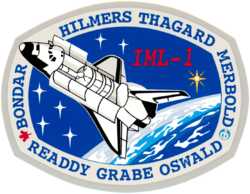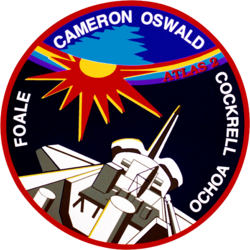Stephen S. Oswald
| Stephen S. Oswald | |
 | |
| NASA Astronaut | |
|---|---|
| Tillstånd | Pensionerad |
| Född | 30 juni 1951 Seattle, Washington |
| Tidigare yrke | Testpilot |
| Grad | konteramiral, USN |
| Tid i rymden | 33 dygn, 22 timmar, 30 minuter |
| Uppdrag | STS-42, STS-56, STS-67 |
| Uppdragsemblem | |
Stephen S. Oswald, född 30 juni 1951 i Seattle, Washington, är en amerikansk astronaut uttagen i astronautgrupp 11 år 1985.[1]
Rymdfärder
Referenser
- ^ List of US Astronauts. Astronaut Fact Book. NASA. Läst 12 september 2013.
- ^ Stephen S. Oswald. NASA. Läst 12 september 2013.
Media som används på denna webbplats
STS-42 Mission Insignia
STS-56 Mission Insignia
portrait astronaut Stephen Oswald
STS-67 Mission Insignia



